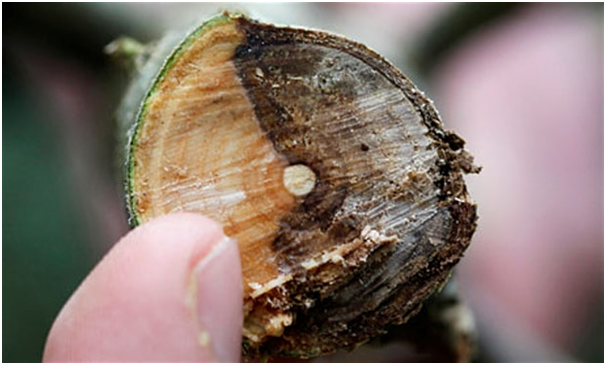Sadly, there are many different pests and diseases that have a detrimental effect on our nation’s trees. The knock-on effect is also damaging our wildlife and woodland areas. That’s why knowledge of the issues facing trees can help us identify if problems are occurring in our own back gardens. Here are just a few examples of problems that our trees are facing:
Acute Oak Decline
The visible signs that acute oak decline is occurring include black patches on stems and trunks that appear to be weeping. Where these patches are weeping, there will be fissures or lengthways splits in the bark. Initially, the canopy health seems fine but over time this begins to decline.
It is thought the cause could be a stress reaction to drought or a bacterial infection from the bark beetle. Thankfully, affected trees can recover but badly affected trees that are left untreated will die within approximately 5 years of first symptoms appearing.
Ash Dieback
This is a serious disease that is responsible for killing ash trees right across Europe. In the UK, the ash tree is vital for local ecological systems, but also culturally as well. There is a great deal of concern over the seriousness of this problem.
It is caused by a fungus which blocks the system of water transportation inside trees. This results in leaf loss, bark lesions and the crown dying back. The disease was first seen in Poland in 1992 before quickly spreading west to the rest of the continent. It was found in nursery stock in the UK in 2012 and a year later in the wild, but it could have here for some time before that.
The younger trees are more susceptible, being killed quickly after infection. The spread of the disease was likely caused by planting infected saplings, but the fungus spores are also wind born. Symptoms include diamond-shaped lesions, shrivelled and black shoots, black dead leaves and leaf veins become brown. For all tree-related issues in your garden, contact a Tree surgeon Dorset such as https://kieranboylandtreeservices.com/

Massaria
Another fungal disease, Massaria has become increasingly problematic in recent years. It causes the dieback of branches, and while not lethal to the tree’s health, can cause branches to fall off. This disease is often seen in plane trees which are predominantly found in public parks and wooded areas. Health and safety concerns over sudden falling branches are the biggest issue with Massaria.
It is mainly seen in mature trees and is visible by a stripping of dead bark on the top of a branch, with sap wood becoming exposed underneath. It is often hard to spot on older trees as the tops of large branches are difficult to see. The fungal disease has caused only small damage to trees in the Mediterranean but causes more aggressive branch death elsewhere in Europe. It is particularly prevalent and harmful in the southern states of the United States.
